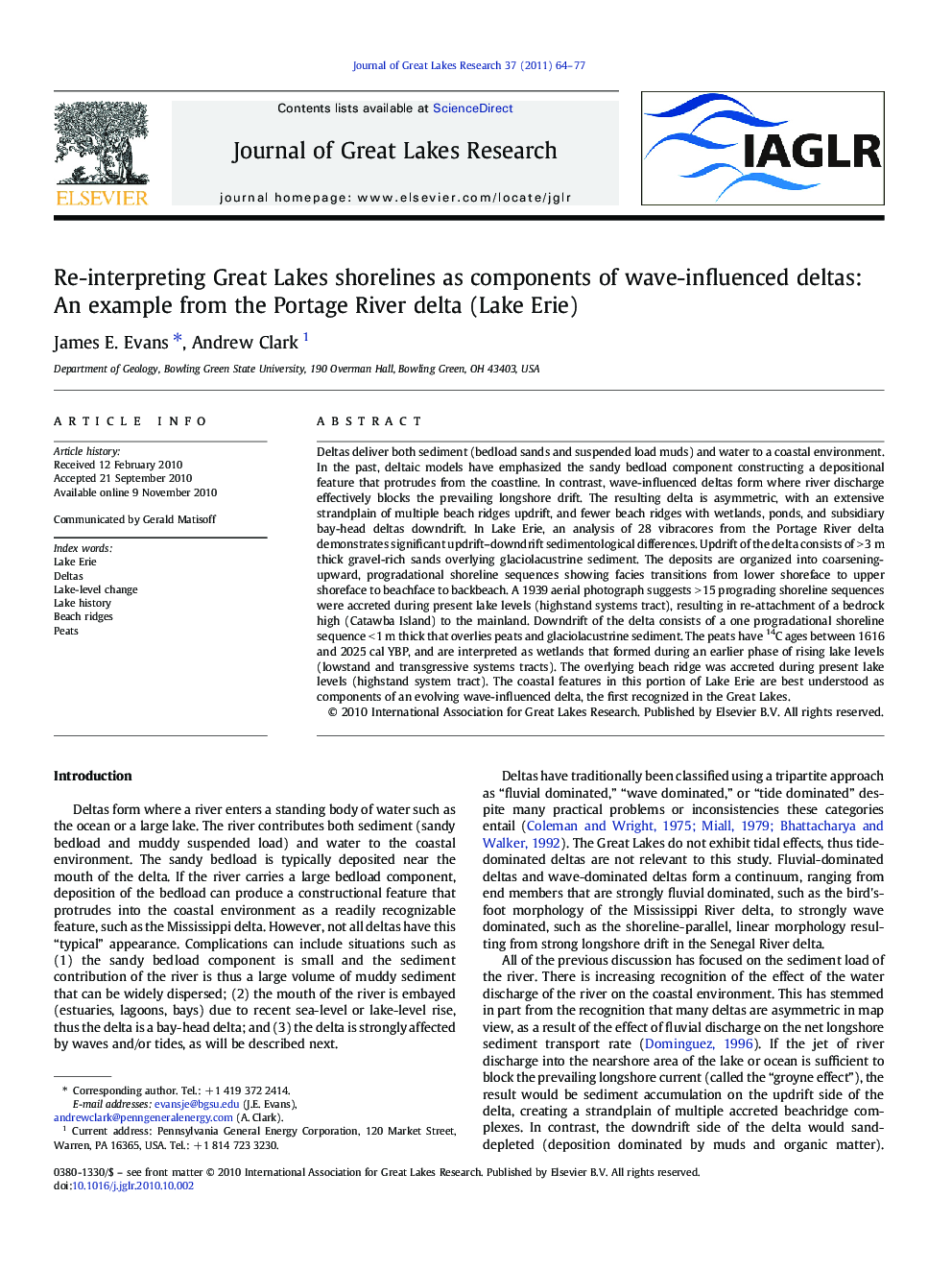| Article ID | Journal | Published Year | Pages | File Type |
|---|---|---|---|---|
| 4398846 | Journal of Great Lakes Research | 2011 | 14 Pages |
Deltas deliver both sediment (bedload sands and suspended load muds) and water to a coastal environment. In the past, deltaic models have emphasized the sandy bedload component constructing a depositional feature that protrudes from the coastline. In contrast, wave-influenced deltas form where river discharge effectively blocks the prevailing longshore drift. The resulting delta is asymmetric, with an extensive strandplain of multiple beach ridges updrift, and fewer beach ridges with wetlands, ponds, and subsidiary bay-head deltas downdrift. In Lake Erie, an analysis of 28 vibracores from the Portage River delta demonstrates significant updrift–downdrift sedimentological differences. Updrift of the delta consists of > 3 m thick gravel-rich sands overlying glaciolacustrine sediment. The deposits are organized into coarsening-upward, progradational shoreline sequences showing facies transitions from lower shoreface to upper shoreface to beachface to backbeach. A 1939 aerial photograph suggests > 15 prograding shoreline sequences were accreted during present lake levels (highstand systems tract), resulting in re-attachment of a bedrock high (Catawba Island) to the mainland. Downdrift of the delta consists of a one progradational shoreline sequence < 1 m thick that overlies peats and glaciolacustrine sediment. The peats have 14C ages between 1616 and 2025 cal YBP, and are interpreted as wetlands that formed during an earlier phase of rising lake levels (lowstand and transgressive systems tracts). The overlying beach ridge was accreted during present lake levels (highstand system tract). The coastal features in this portion of Lake Erie are best understood as components of an evolving wave-influenced delta, the first recognized in the Great Lakes.
Research Highlights► This paper recognizes the first wave-influenced delta in the Great Lakes. ► Wave-influenced deltas are where the river discharges jet blocks the longshore drift and causes a strandplain development on the updrift side of the delta. ► The implications are that beach ridges on updrift and downdrift sides of the delta are not forming synchronously. ► In the Great Lakes, deltaic processes affect more coastlines than previously recognized.
